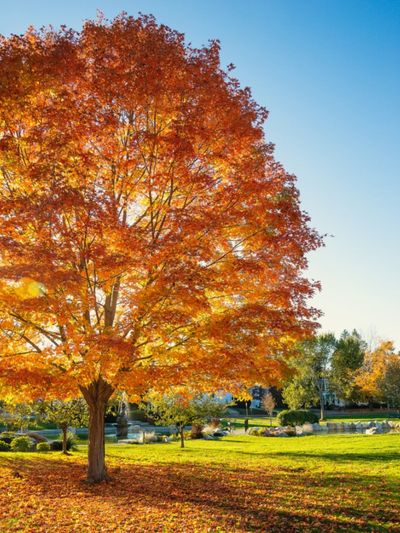Shade Trees in the Northeast
The northeast is known for its outrageously beautiful autumn color, and the best northeast shade trees take full advantage of that. One of the finest and most common of these trees is the red maple. This tree can reach 70 feet (21 m.) in height, with a spread of up to 50 feet (15 m.). A North American native, it can thrive across the region and is one of the main trees responsible for that classic autumn foliage look. It is hardy in USDA zones 3-9.
Red Trees
Other excellent northeast shade trees that exhibit red fall color include:
Black Cherry (zones 2-8)White Oak (zones 3-9)Smooth Sumac (zones 3-9)
Orange Trees
If you’re looking for orange fall color instead, you could try the small but breathtaking Serviceberry, a North American native that can reach up to 20 feet (6 m.) in height. Its orange fall foliage is counterbalanced by its gorgeous, lilac-like spring flowers. It’s hardy in zones 3-7. Some other great sources for orange foliage are:
Smoke Tree (zones 5-8) Japanese Stewartia (zones 5-8)
Yellow Trees
If you want yellow foliage, consider a quaking aspen. Since it spreads by shooting up clones of itself, quaking aspen isn’t really a tree you can have just one of. But in the right conditions, a small grove can function like a beautiful single specimen. It is hardy in zones 1-7.
Best Shade Trees Northeast Region
If you’re looking for New England shade trees that aren’t only known for fall color, consider a flowering dogwood. Hardy in zones 5-8, this tree can serve as a gorgeous springtime centerpiece. Some more good options include:
Weeping Willow (zones 6-8)Tulip Tree (zones 4-9)
